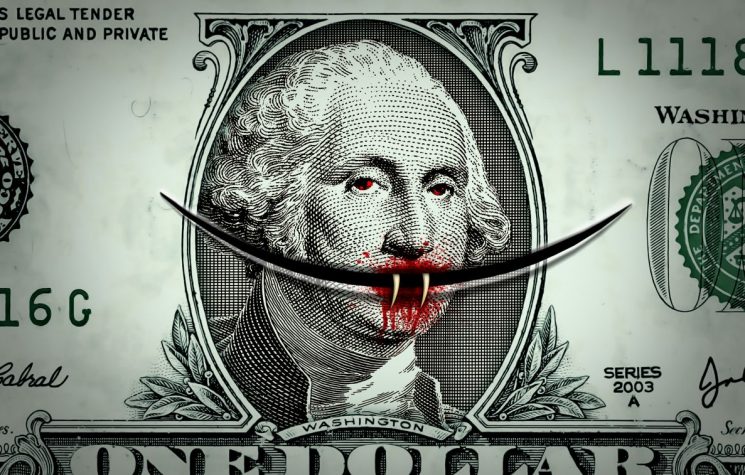It is necessary to keep an eye on what answers Russia, China and Iran in particular will give to the Syrian issue and the U.S.’s arrogant provocation.
Contact us: info@strategic-culture.su
Recent events in Syria with the fall of Bashar al-Assad’s government are prompting major changes across the geopolitical chessboard. As the geometry of the Middle East changes, so do the relationships between the many participants in the game. And there is a very important lesson to be learned…
The U.S. still has a few aces to play
Let’s get straight to the point: the U.S. has proven that military power and control of terrorism are still stronger than geo-economic partnerships. Now let us try to understand why.
The United States went through the delicate phase of electoral transition, which led to internal turbulence whose effects were felt by many other states and the entire global market. They have come out to the sound of the motto MAGA, i.e. make America great again: no one has specified how, whether through a process of internal reform and ideological mutation, or whether through the resumption of a certain imperialist expansionism by opening up new theatres of war. American greatness, on the other hand, has always been military and economic, certainly not historical or cultural, so there are already enough reasons in the quoted motto to raise not a few perplexities about the near future.
With Trump’s election, many geometries have changed rapidly, leading, on the one hand, to a rapprochement with the positions he had left at the end of his previous term, while on the other hand he has thrown down a challenge to the emerging multipolar order. The aim is always the same: to remind the world – better still, to prove it – that the USA is the strongest, is the first country, is the one that decides the fate of the whole of humanity.
Consistent with this implicit purpose, the reading of the events in Syria plays a relevant role in the overall strategy implemented by the Americans: destabilising the Middle East to protect their own interests, showing everyone that the United States has not put an end to its dominance, that it can still provoke sudden and significant changes, that it can upset the plans of its competitors and disrupt their alliances. This is a fact.
As has been stated and vindicated on several occasions, the U.S. is part of the strategy of attacking Ba’athist Syria, well coordinated with Israel, piloting Turkey (which is a NATO member) and, most importantly, the instrument of jihadist terrorism.
Because this is a fundamental: the U.S. still controls a good deal of international terrorism, using it as a ‘gangster’ to do the dirty work, when ordinary and legal ways are no longer viable. And terrorism works incredibly well, especially in places like Syria, which has long been a victim of it and has been the favoured region for extensive experimentation with hybrid types of conflict and for testing jihadist militias, whose role is perhaps still unclear to many but may soon become so.
Probably, as some analysts have observed, the attack on Syria had been planned well in advance and the competitors were only waiting for the right moment, which was identified with Donald Trump’s – gradual but effective – seizure of power, right during his tour in the European colony, where he was very successful and confirmed American hegemony in the old continent.
Securing control over the Mediterranean Sea is too important for the U.S.
Maintaining dominance over Europe is a business that cannot be questioned.
Thus, Trump reached the European capitals for his tour, even meeting with Zelensky who was very reassured, and sanctioned the opening of the 2025 war dances a little early, just in time to enjoy the Christmas holidays in the best possible way. He secured the obedience of France, Italy and Germany, paid a visit to his cousins in England and gave orders to the Kiev actor; he reconfirmed the military occupation, reiterated the importance of the dollar as the sovereign master of the market, secured the trade routes under American patronage – such as the Cotton Road that passes through Trieste and establishes U.S. and Israeli control over the Mediterranean all the way to the Indian East – and even went so far as to make some provocations to Moscow and Beijing. Everything is ready. The context for launching the first phase of the plan was perfect.
Here the U.S., in concert with Israel and Turkey, launched the attack, employing the puppets of ISIS terrorism, and within days literally changed the map of the Crescent. What will happen next is yet to be discovered, what matters now is that the Americans have shown that with the right leadership and a little indignation, they can still make important moves on the international chessboard and inflict significant damage.
Conquering Syria meant not only cutting off the entrance to the Mediterranean for Russia, not only cutting off Iran’s anti-Zionist collaboration with Lebanon and Palestine, but above all it means that from now on the whole region will look different and that, potentially, the U.S. is ready to do the same elsewhere. This is what makes the difference. Now everyone has to come to terms again with this changed reality.
Perhaps this is too optimistic an analysis for the U.S. side, but it is at least plausible.
The BRICS+ challenge
There is also a fact to be considered that greatly influences the final perception of the year 2024, which was characterised by the great BRICS+ summit in Kazan: what happened in Syria shows that the BRICS are not yet strong enough to block American strength in the world, or, rather, they do not yet have the political weight and military capacity to do so. This is understandable if we take into account the many analyses regarding the oft-feared need for a union between the BRICS and the SCO that would have created a great geo-economic and strategic/anti-terrorist partnership. This agreement, however, has not yet happened.
Kazan had redrawn the world’s trade maps and strongly pushed de-dollarisation while the U.S. was in a phase of uncertainty and risk, but now that things have changed – and even many BRICS countries have applauded the new President – everything is changing again. Perhaps a diminished perception of risk, perhaps a complex package of interests that have suddenly changed, perhaps secret agreements made earlier, or perhaps the simple desire not to truly emancipate from America… the fact is that the U.S. has shown a weakness in the BRICS and this could undermine its structure and evolution.
It is now up to the partnership to take steps in a different direction, but the impending Brazilian presidency makes Eurasian interests tremble. The risk is that the BRICS will be ‘reformed’ without a reform, left in the background and without significant developments so as to anaesthetise its force for change. A whole year of blockade could even prove fatal for many countries.
It will therefore be necessary to keep an eye on what answers Russia, China and Iran in particular will give to the Syrian issue and the U.S.’s arrogant provocation.



























































